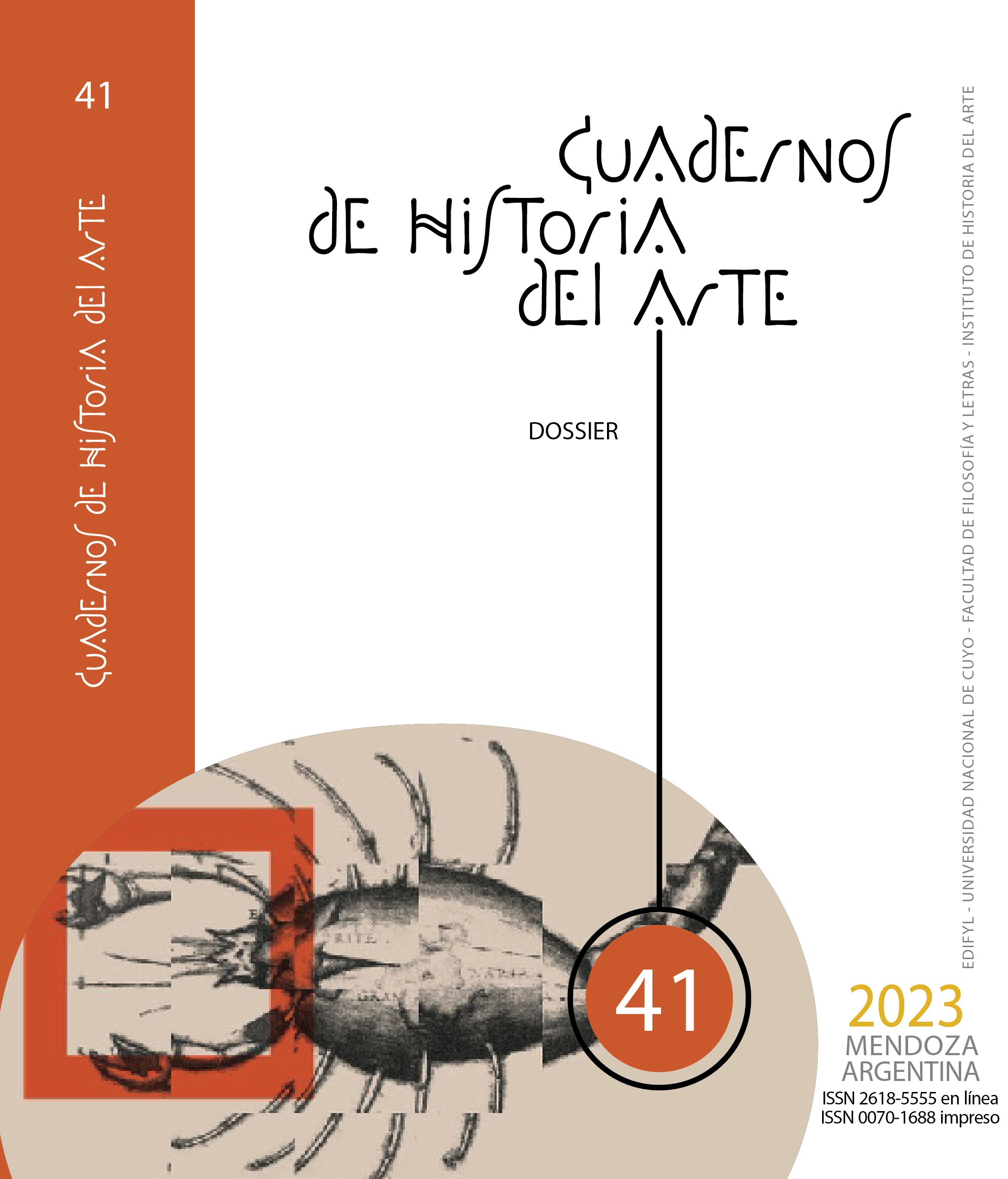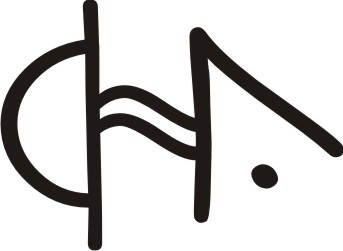Perfil antropológico de la obra de arte. Raúl Domínguez y Fidel Roig Matons
DOI:
https://doi.org/10.48162/rev.45.010Palabras clave:
arte, cultura, imagen, antropologíaResumen
Considerando la representación figurativa de la imagen como una categoría mental con su propia historia, que refleja y permite interpretar la cultura de una sociedad, estudiaremos las obras de dos artistas que han convivido con distintas comunidades de nuestro territorio con el deseo de llevar a cabo no solo un relevamiento de objetos, producciones, hábitos, costumbres, sino una auténtica interpretación de la cultura a través de sus instituciones y sus funciones, desarrollando una verdadera narrativa visual.
Nos detendremos en algunas obras de Fidel Roig Matons (1887-1977) quien ha retratado los habitantes de las Lagunas y sus costumbres (Argentina). También nos detendremos en la obra de Raúl Dominguez (1918-1999) quien ha pintado a los habitantes de las islas del Paraná (Argentina). Ambos artistas se asentaron y convivieron en los territorios que se proponían conocer, y se han valido de la imagen visual para transmitir valores, costumbres y mentalidades. En ambas situaciones destacamos el hecho de que estas sociedades, conservan una estrecha relación con la naturaleza.
Consideramos que se trata de una aproximación análoga a la del antropólogo, que se relaciona con los aspectos intangibles de una cultura, que el artista devela. Nos preguntamos cual podría ser el perfil antropológico de la obra de arte.
Citas
Argan, Giulio Carlo. Storia dell’arte italiana Vol.II, Da Giotto a Leonardo. Milano: Sansoni, 20023.AA.VV., Guanacache. Fidel Roig Matóns, el pintor del desierto. Colección Artes y Partes. EDIUNC: Mendoza, 20192.
Belting, Hans. An Anthropology of images. Princeton: Princeton University Press, 2011.
Burke, Peter.What is Cultural History. Cambridge: Polity, 2008.
Bohannan, Paul – Glazer, Mark. High Points in Anthropology. New York: Alfred Knopf, 1988.
Calderón Archina, Aldana. “Reparación histórica y municipalización: el caso de la comunidad Huarpe de Guanacache, San Luis-Argentina”, Estudios en antropología social- Nueva serie-1(2) (2016). CONICET_Digital_Nro.b57c1de9-a833-4a52-9951-cf1966ee923efA.pdf
Cassirer, Ernst. Saggio sull’uomo. Roma: Armando Editore, 2009.
Cepeda, Gabriel. 2018. “Baigorria, territorio chaná”. Acceso 24 septiembre 2023. https://elurbanodigital.com /baigorria/item/5852-baigorria-territorio-chana.
Ceri Via, Claudia. Nei dettagli nascosto. Carocci: Roma, 2009.
Domínguez, Martín Raúl. “El artista que la ciudad olvidó”, entrevista por Alvaro Marocco, https://www.lacapital.com.ar/cultura-y-libros/el-artista-que-la-ciudad-olvido-n1570265.html
Figueira, José Joaquín y Rodríguez de Figueira Dyothimen N., B.B.A.A. Boletín Bibliográfico de Antropología Americana 23-25, no.2 (1960): 23-29. https://www.jstor.org/stable/40974366.
Kahn, J.S.. El concepto de cultura: textos fundamentales.Barcelona: Editorial Anagrama, 1975.
Kubler, George.The shape of time. Remarks on the History of Things. New Haven-London: Yale University Press,1962.
Tylor, Edward Burnett.Primitive Culture, Vol I. London: John Murray,1920.
Descargas
Publicado
Cómo citar
Número
Sección
Licencia
Derechos de autor 2023 Maria Cristina Dawson

Esta obra está bajo una licencia internacional Creative Commons Reconocimiento-NoComercial-CompartirIgual 3.0.
Los artículos enviados al Comité Editor del Instituto de Historia del Arte, para ser publicados, los autores reservan su derecho de propiedad, pero otorgan a la Editorial los derechos de impresión y aceptan la difusión tanto en papel, como en internet y en aquellos sitios virtuales de las cuales los CHA formen parte.

Esta obra está bajo una Licencia Creative Commons Atribución-NoComercial-CompartirIgual 3.0 No portada


















_00.07_.55_2.png)





